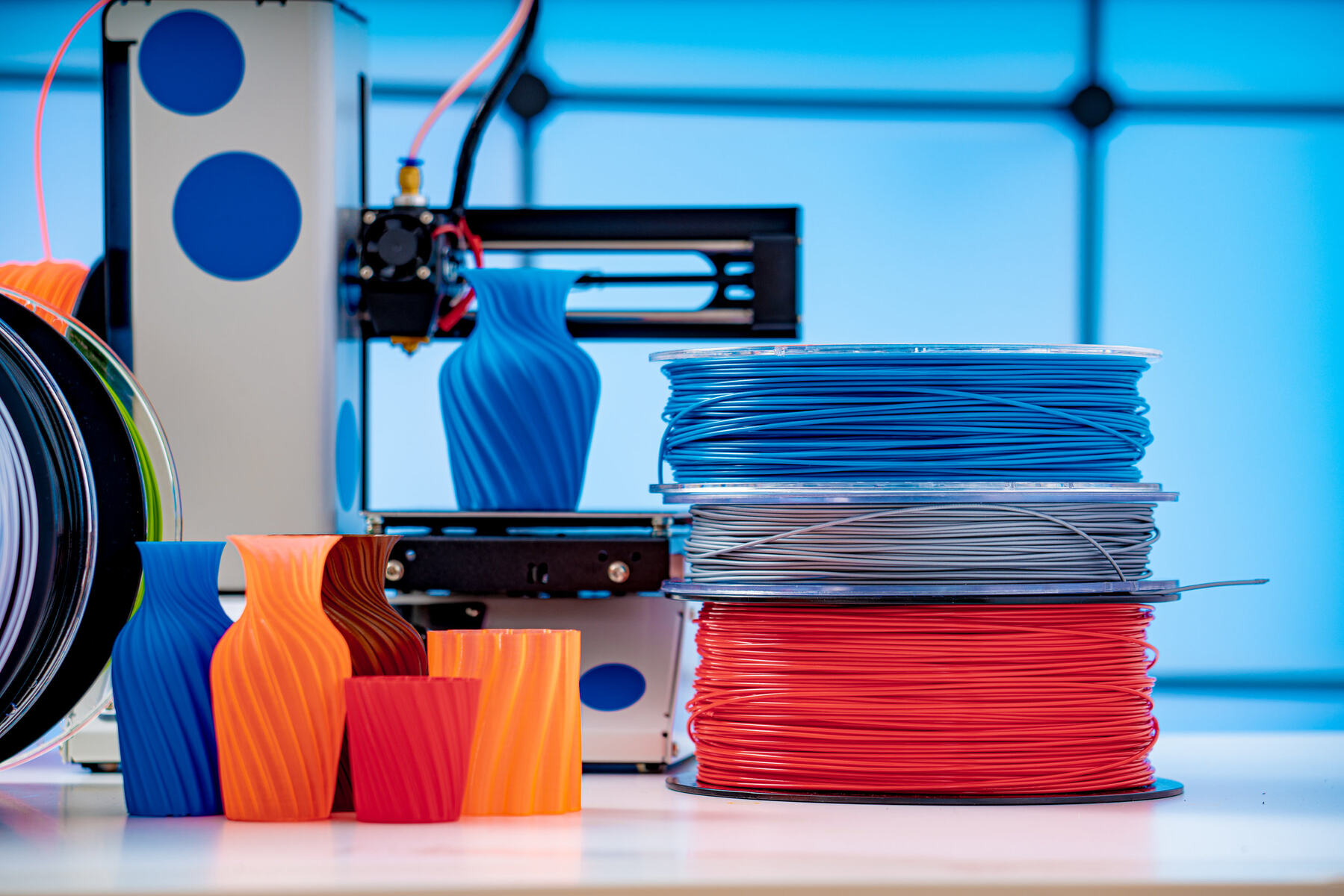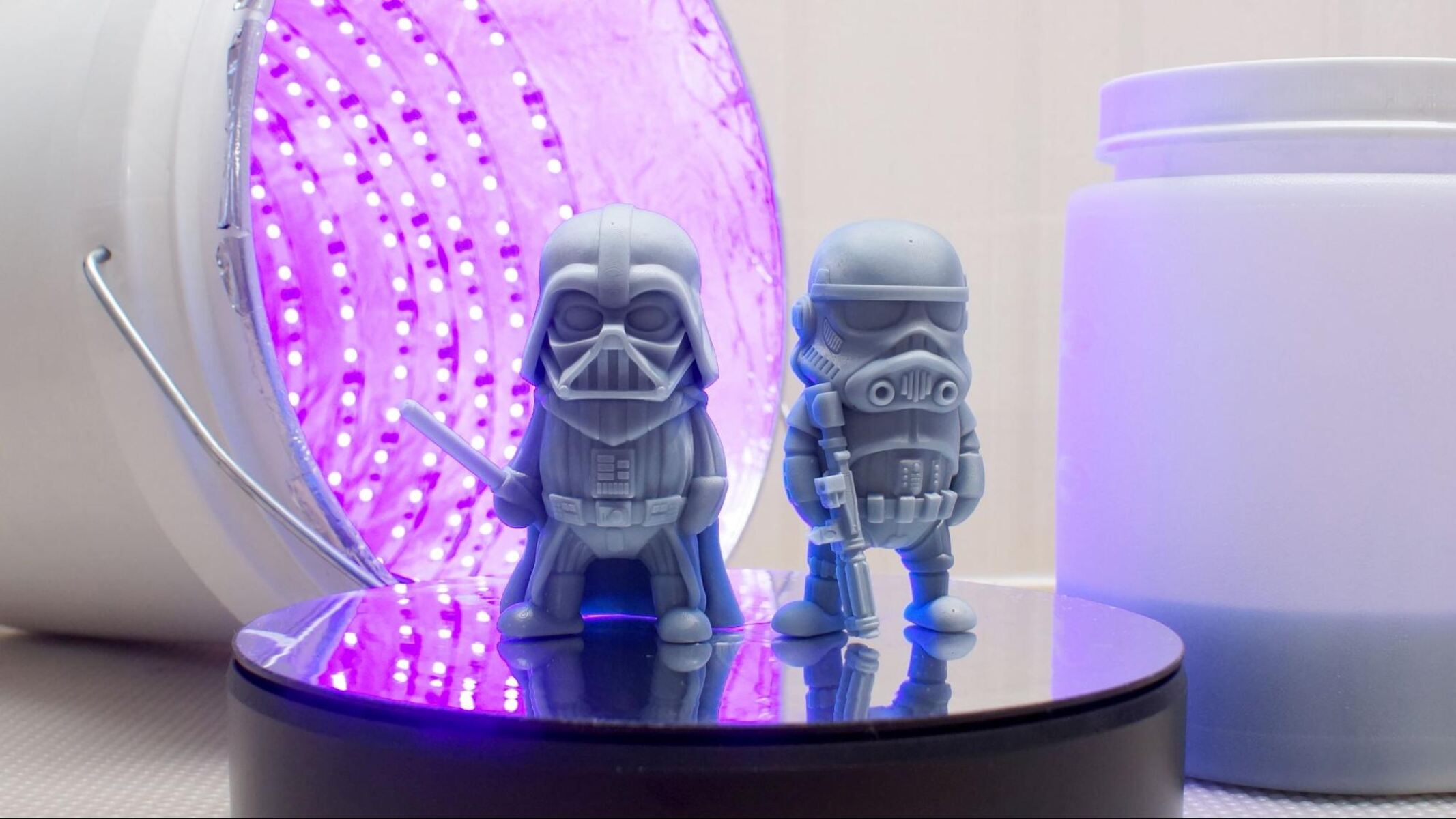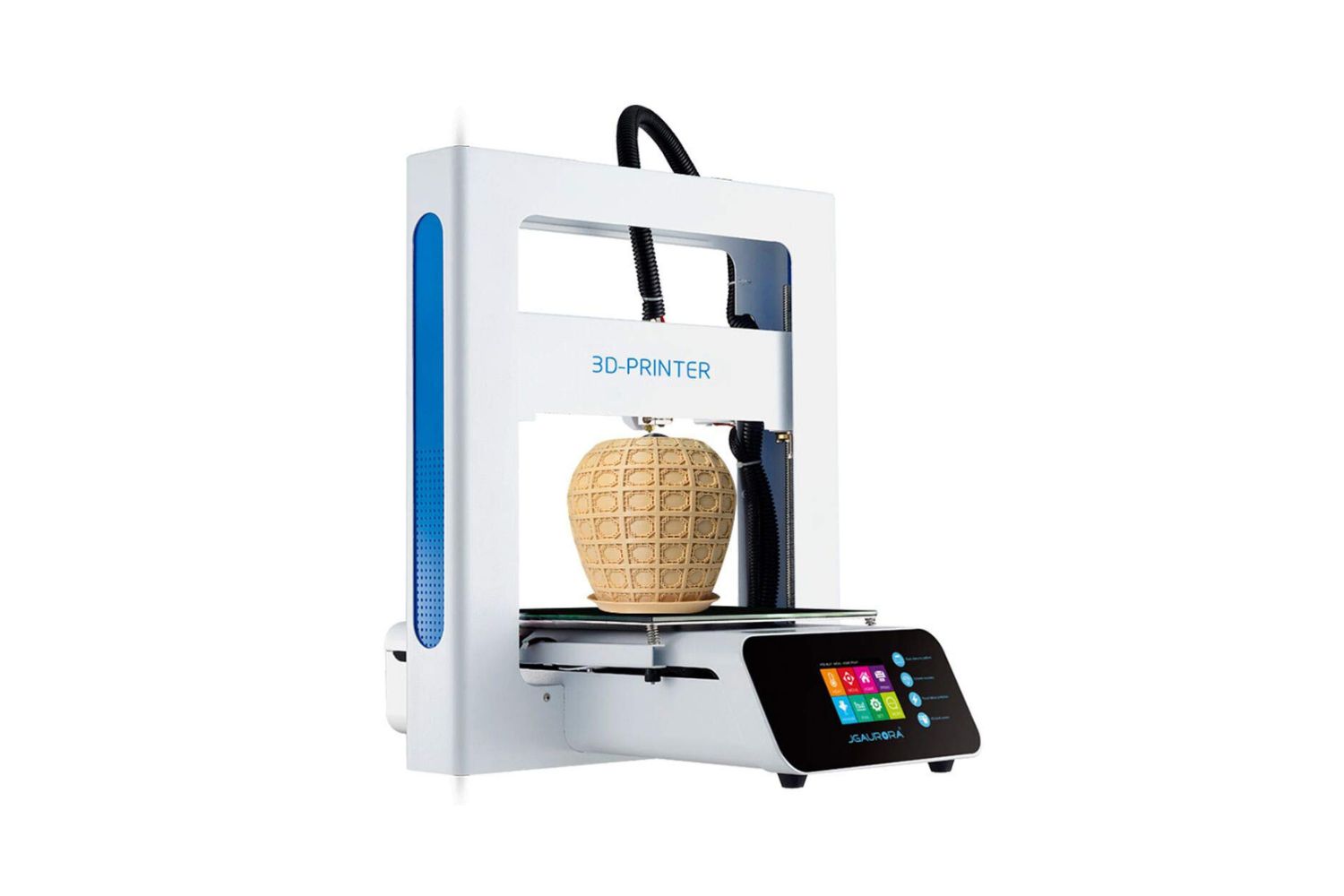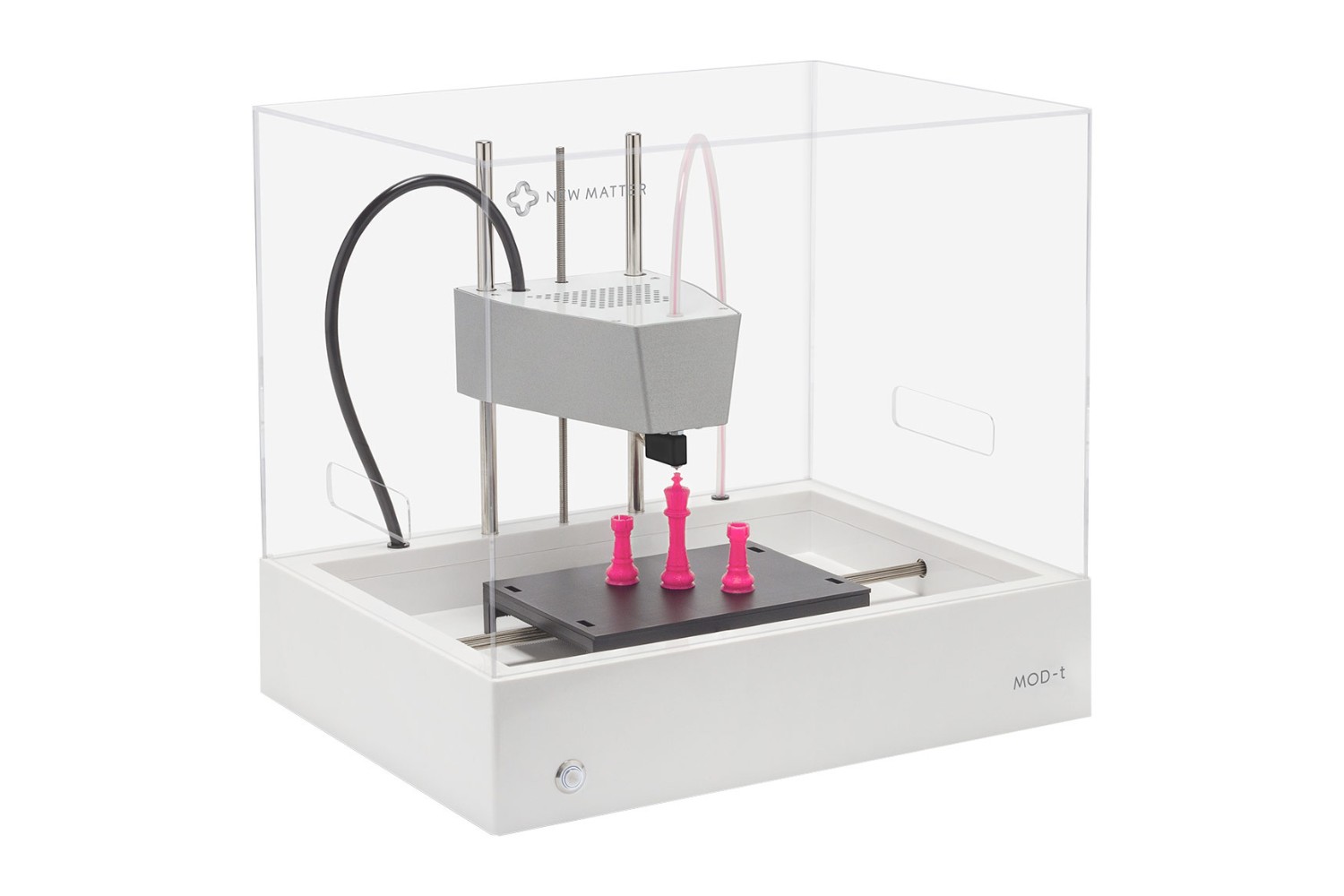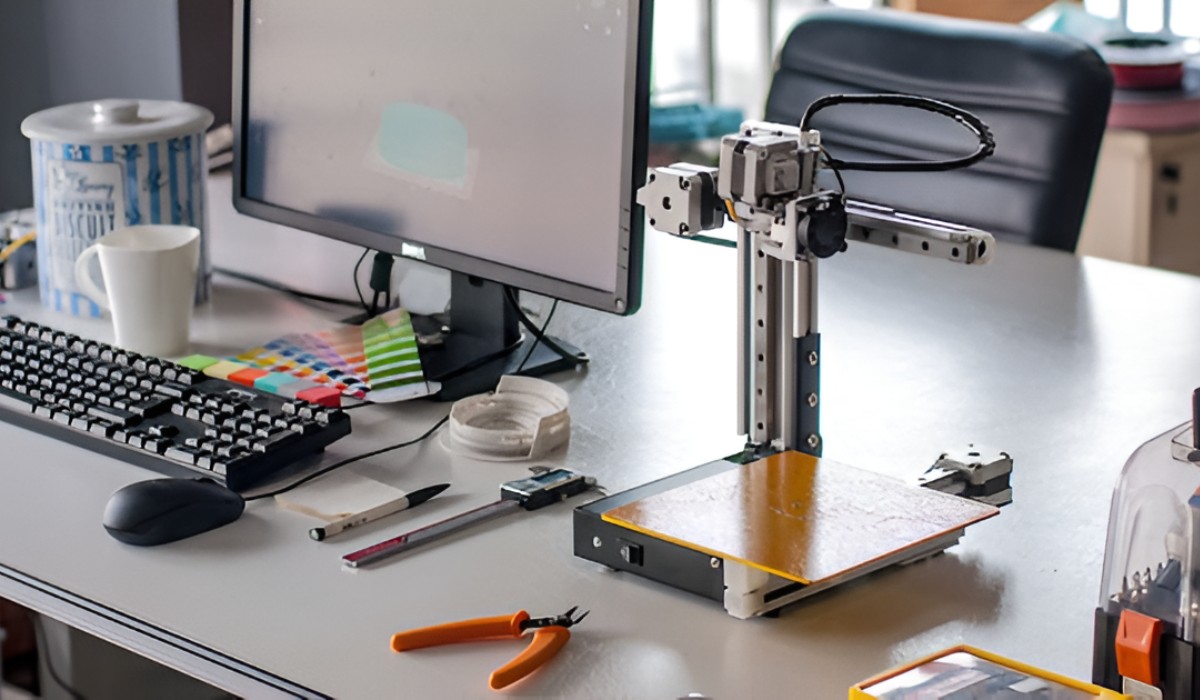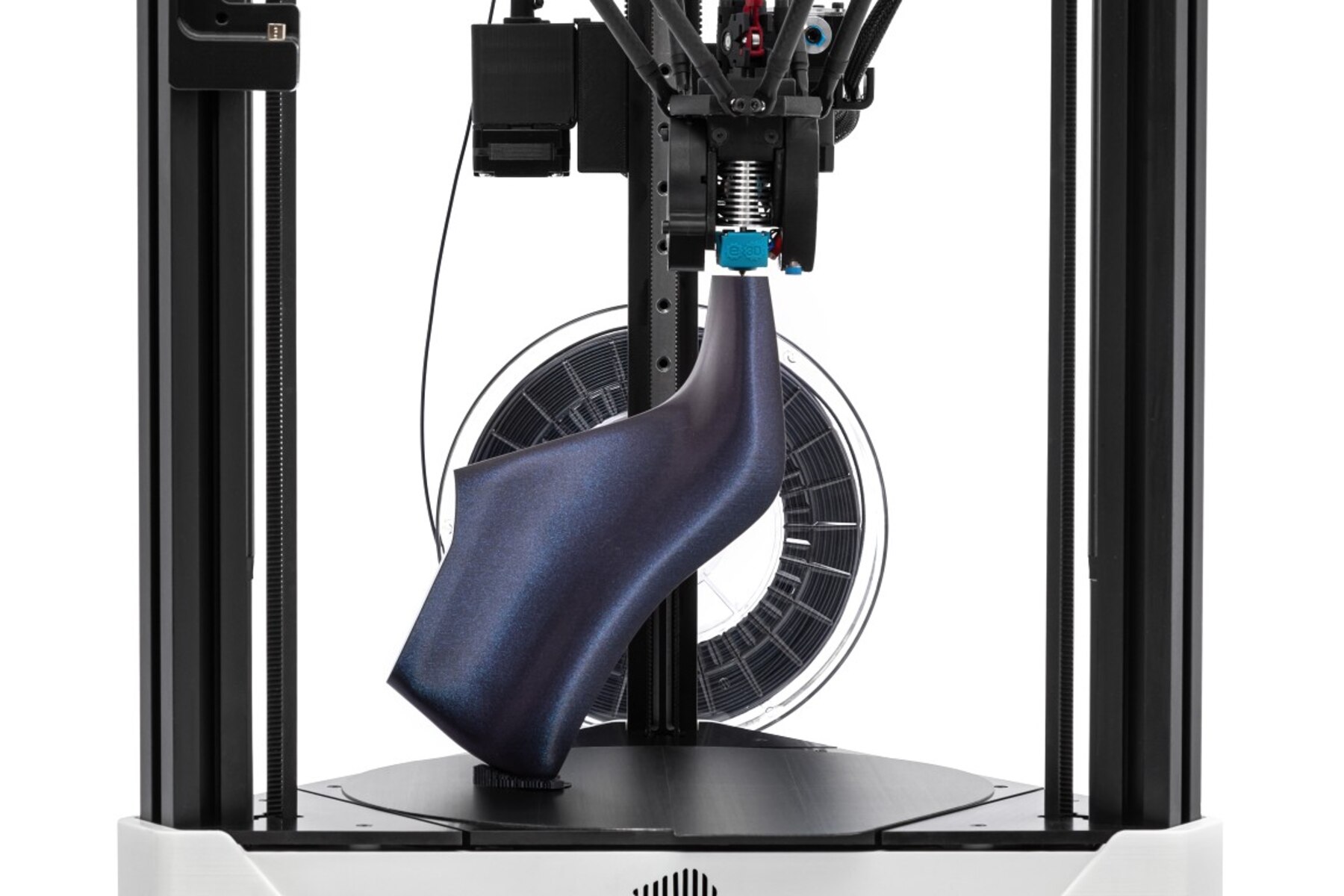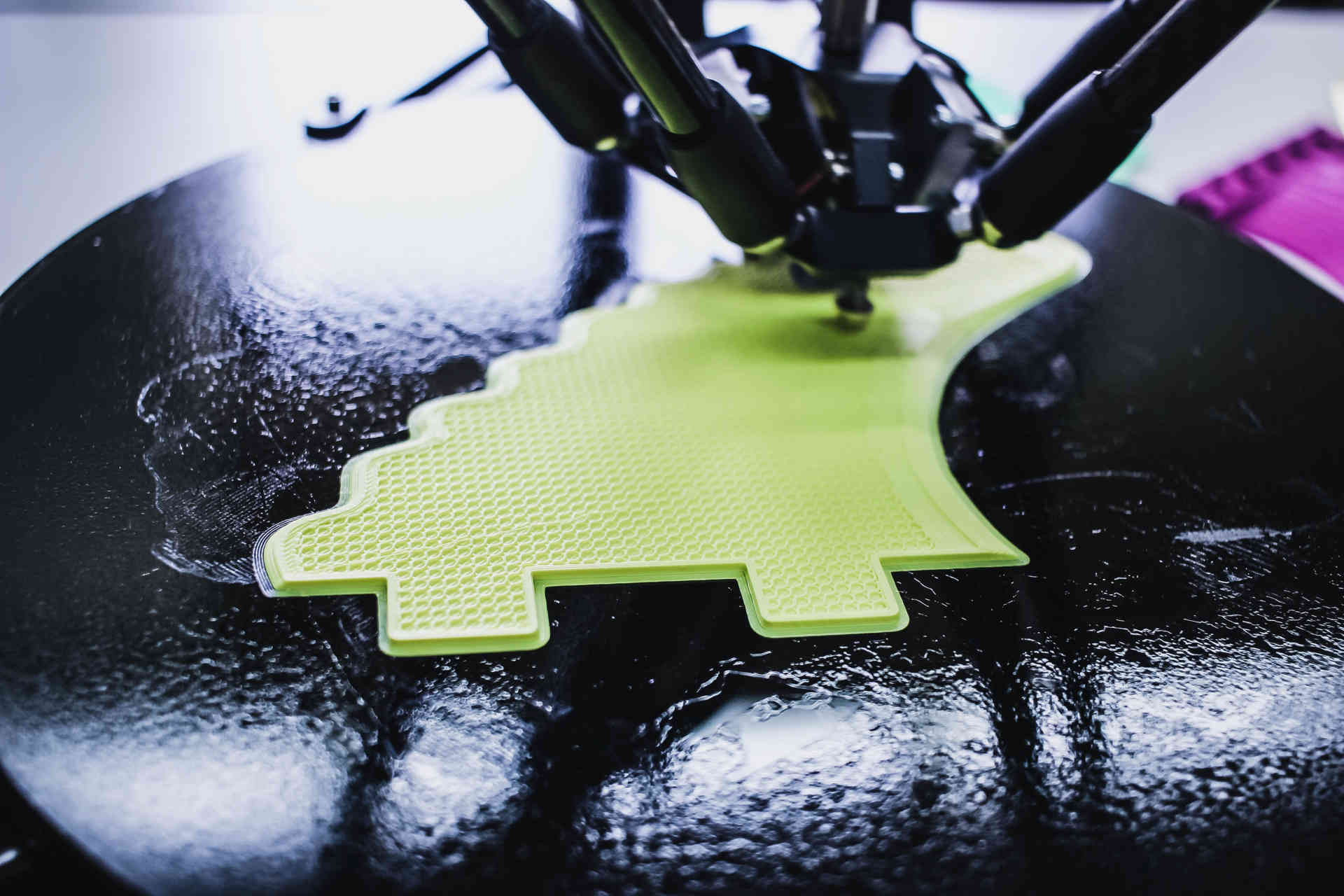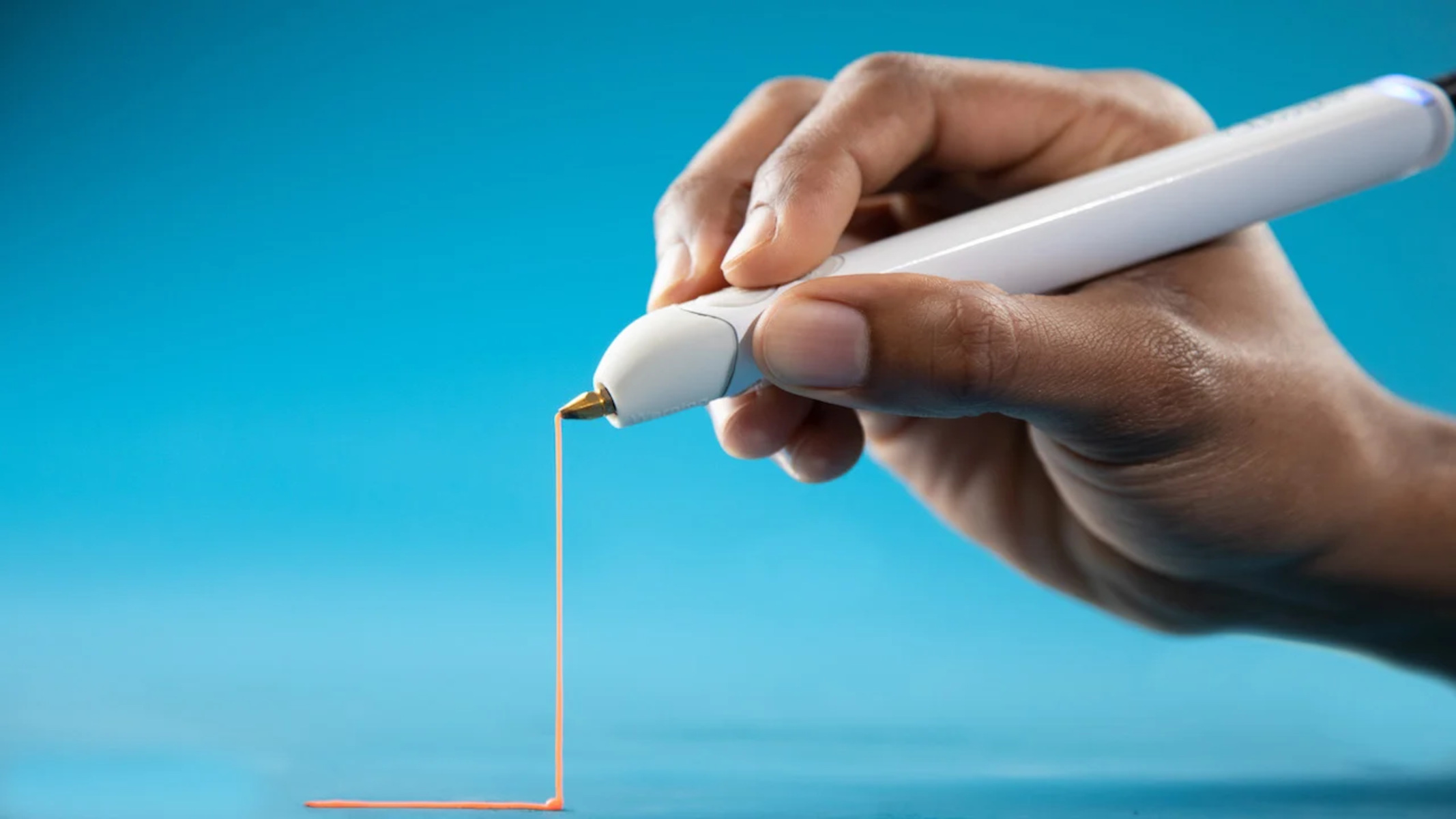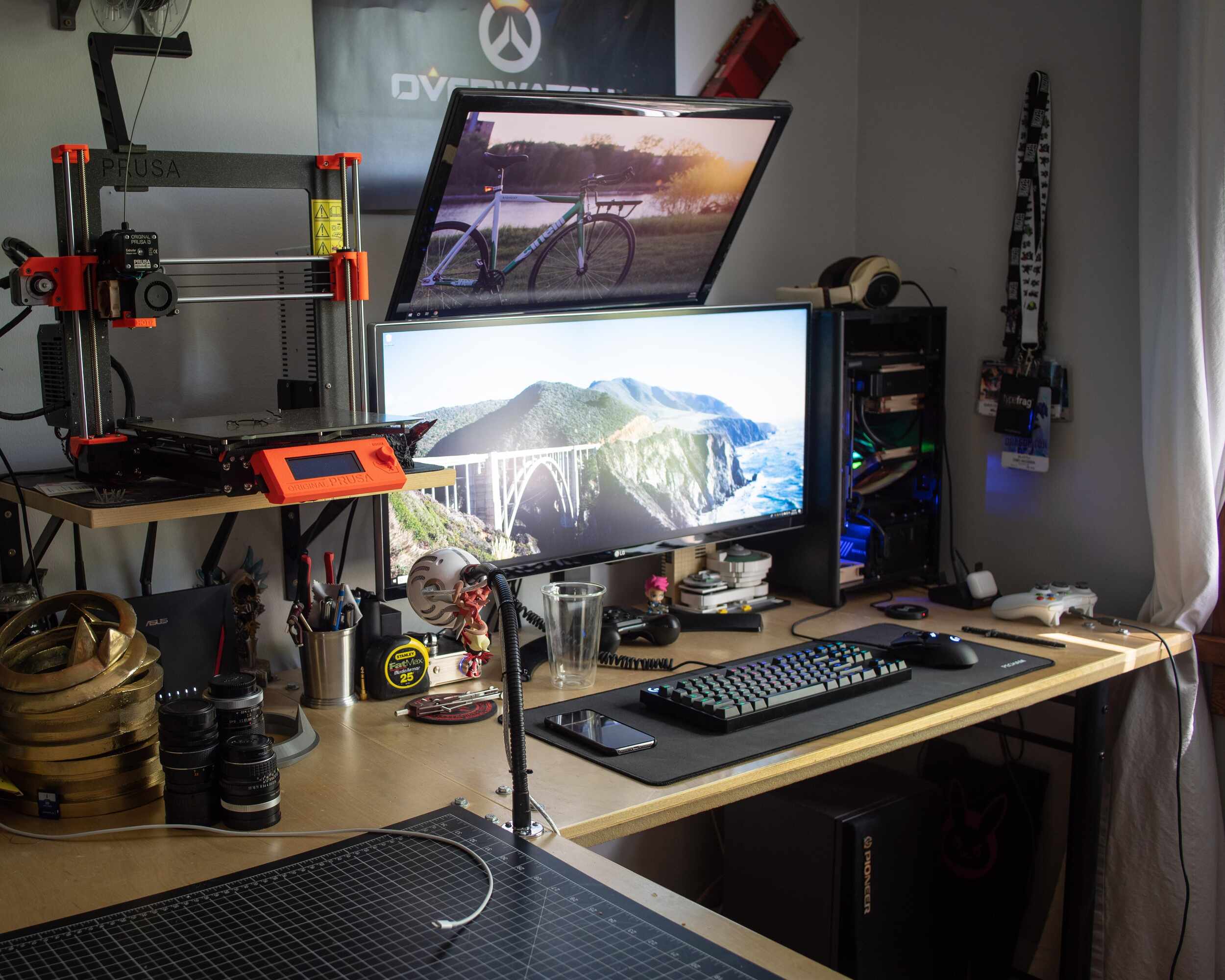Introduction
The advancement of technology has brought about various innovations and breakthroughs in several industries. One such innovation that has gained significant attention is the 3D printer. A 3D printer is a remarkable device that has the ability to create three-dimensional objects by building layers of material on top of each other. It has revolutionized the way we manufacture, design, and create various products. From prototypes to customized items, the applications of 3D printers are vast and diverse.
Initially developed for rapid prototyping in manufacturing, 3D printers have since found their way into various industries. The ability of 3D printers to transform digital designs into physical objects with precision and accuracy has opened up a world of possibilities.
This article will explore the wide range of applications of 3D printers in different fields and industries. From creating prototypes and manufacturing products to educational and medical purposes, the impact of 3D printers is being felt in various sectors around the world.
Moreover, the customization and personalization capabilities of 3D printers have proven valuable in arts and crafts, architecture, and even the food industry. Furthermore, the aerospace and automotive industries have also embraced 3D printing technology for its ability to produce lightweight and complex components.
So, whether you’re curious about how 3D printers are used or interested in the future potential of this technology, read on to discover the fascinating applications that a 3D printer offers. Let’s delve into the exciting world of 3D printing and its versatile applications in different fields.
Creating Prototypes
One of the primary uses of 3D printers is in the creation of prototypes. Before mass production, manufacturers need to test and refine their designs to ensure functionality, efficiency, and user-friendliness. Traditionally, creating prototypes involved lengthy and expensive manufacturing processes. However, with the advent of 3D printing, the prototyping process has become more accessible and cost-effective.
By using a 3D printer, designers and engineers can quickly transform their digital designs into physical models. This allows for a more hands-on approach to product development, as they can assess the design’s aesthetics and functionality by holding and examining the prototype firsthand.
Additionally, 3D printing enables rapid iterations in the design process. If flaws or areas for improvement are identified during prototype testing, adjustments can be made digitally and the modified design can be printed in a matter of hours. This iterative approach saves valuable time and resources compared to traditional prototyping methods.
Another advantage of 3D printing for prototyping is the ability to create complex geometries and intricate details that traditional manufacturing methods struggle with. With the layer-by-layer additive manufacturing process, 3D printers can build intricate designs with precision and accuracy, allowing designers to create prototypes that closely resemble the final product.
Overall, the use of 3D printers for creating prototypes offers significant benefits to manufacturers. It facilitates faster and more cost-effective product development, allowing for quick iterations and improvements. By enabling a more hands-on approach to design validation, 3D printing has revolutionized the prototyping process and paved the way for innovation in various industries.
Manufacturing and Production
Aside from prototyping, 3D printers have also found their place in the manufacturing and production sector. The ability to create intricate and customized designs with ease makes 3D printing an attractive option for small-scale production and customization.
One of the advantages of using 3D printers in manufacturing is the reduced need for tooling and molds. In traditional manufacturing processes, creating molds and tooling can be time-consuming and costly. With 3D printing, manufacturers can directly build their products layer by layer, eliminating the need for expensive tooling and reducing lead times.
Furthermore, 3D printing allows for greater design freedom. In traditional manufacturing, certain designs may be challenging or impossible to produce due to constraints in manufacturing technologies. However, with 3D printing, complex geometries and organic shapes can be easily realized. This gives designers and engineers the flexibility to create innovative and unique products that may not have been feasible with traditional techniques.
In addition, 3D printing enables on-demand manufacturing. Products can be printed as needed, eliminating the need for large inventories and reducing the risk of excess stock. This makes it a cost-effective solution for small businesses and startups, as it minimizes initial investment and reduces storage costs.
Moreover, 3D printers have been used in the production of spare parts, particularly for older or rare equipment. Instead of relying on conventional supply chains or struggling to find discontinued parts, manufacturers can simply 3D print the required components, ensuring the continuous operation of machinery.
Overall, 3D printing in manufacturing and production offers numerous advantages, including reduced costs, increased design freedom, and on-demand manufacturing capabilities. As the technology continues to advance, we can expect an even greater integration of 3D printing into traditional manufacturing processes, revolutionizing the way products are created and produced.
Education and Research
3D printing has become a valuable tool in education and research, providing students and researchers with a hands-on approach to learning and experimentation.
In educational settings, 3D printers allow students to bring their ideas to life. By designing and printing their creations, students can gain a deeper understanding of concepts in various subjects, including science, technology, engineering, arts, and mathematics (STEAM). Whether it’s building a functional model or creating a visual representation of complex concepts, 3D printing enhances student engagement and creativity.
Moreover, 3D printers enable educators to demonstrate abstract concepts in a tangible way, making learning more accessible and interactive. Students can explore and manipulate physical models, enhancing their understanding of complex structures, biological processes, and more.
In the field of research, 3D printing has revolutionized the way experiments are conducted and prototypes are created. Researchers can use 3D printers to fabricate specialized tools, equipment, and custom-designed apparatuses that are tailored to their specific needs. This allows for greater efficiency, precision, and cost-effectiveness in the research process.
Furthermore, the medical field has seen significant advancements through the use of 3D printing. Researchers have utilized 3D printers to create anatomical models for surgical planning and practice, prosthetic limbs, and even organ and tissue regeneration. 3D printing has provided new possibilities for medical education, surgical training, and personalized patient care.
Overall, 3D printing in education and research has opened up new avenues for innovation and experimentation. From enhancing students’ learning experiences to aiding researchers in their scientific pursuits, 3D printers have become integral tools in the pursuit of knowledge and advancement in various fields.
Medical Field
The medical field has witnessed significant advancements with the integration of 3D printing technology. From creating patient-specific models to fabricating complex medical devices, 3D printers have revolutionized healthcare in numerous ways.
One of the key applications of 3D printing in the medical field is in surgical planning and practice. Surgeons can generate 3D models of a patient’s anatomy from medical imaging data, allowing them to visualize and plan complex procedures with greater accuracy. These models enable surgeons to better understand the patient’s anatomy and identify potential challenges or complications before entering the operating room.
Furthermore, 3D printing has made significant contributions to the field of prosthetics. Customized prosthetic limbs can be created with precise measurements and fitting based on an individual’s unique anatomy. This improves comfort, functionality, and overall quality of life for prosthetic users.
In addition, 3D printing has been instrumental in the development of medical implants and devices. With the ability to create intricate and patient-specific designs, 3D printers have facilitated the production of custom implants, such as cranial implants, orthopedic implants, and dental implants. These patient-specific implants offer better outcomes, improved biocompatibility, and reduced surgical complications.
Moreover, 3D printing has opened up possibilities for tissue engineering and regenerative medicine. By printing with biological materials, researchers are exploring the potential to create artificial organs and tissues. This technology has the potential to revolutionize transplantation, as it could eliminate the need for organ donors and address the current shortage of organs.
Additionally, 3D printing has found applications in the creation of medical devices and instruments. From surgical instruments to assistive devices, 3D printers enable the production of highly customized tools tailored to specific patient needs.
Overall, 3D printing is transforming the medical field, offering personalized solutions, enhancing surgical procedures, and pushing the boundaries of regenerative medicine. As technology continues to advance, we can expect further advancements and innovations in the use of 3D printing in healthcare.
Arts and Crafts
3D printing has opened up new possibilities in the world of arts and crafts, allowing artists and creators to bring their imaginative concepts to life.
One of the advantages of 3D printing in arts and crafts is the ability to create intricate and complex designs that would be challenging to produce with traditional methods. Artists can design and digitally sculpt unique and detailed pieces that can then be printed layer by layer, resulting in high-resolution physical objects.
Furthermore, 3D printing allows for customization and personalization. Artists can create personalized jewelry, accessories, and home decor items that reflect the unique tastes and preferences of their customers. This level of customization provides a more intimate connection between the artist and the consumer.
Moreover, 3D printing enables artists to explore new materials and textures. From traditional materials like plastic and metal to experimental materials like various polymers and resins, artists can experiment with different mediums to achieve desired effects and aesthetics.
Additionally, 3D printing has revolutionized the process of creating molds and casts. Instead of relying on traditional mold-making techniques, artists can use 3D-printed molds to replicate their designs, making mass production of their creations more efficient and cost-effective.
The accessibility of 3D printing technology has also had a significant impact on the arts and crafts community. Artists, designers, and makers can now have their own 3D printers, allowing them to produce their creations in-house and reducing the reliance on third-party manufacturers.
Overall, 3D printing has brought about a new era of creativity and innovation in the arts and crafts world. It has expanded the possibilities for artists, allowing them to push the boundaries of traditional artistic mediums and bring their unique visions to life in three-dimensional form.
Customization and Personalization
3D printing has revolutionized the concept of customization and personalization, allowing individuals to create and obtain products that are tailored to their unique preferences and needs.
One of the key advantages of 3D printing is its ability to produce highly customized designs. With traditional manufacturing methods, creating customized products can be costly and time-consuming. However, with 3D printing, the process becomes more efficient and affordable.
From personalized phone cases and jewelry to custom-designed furniture and clothing, 3D printing enables individuals to express their individuality through the creation of one-of-a-kind products. Through CAD software, users can modify existing designs or create their own from scratch, resulting in a truly personalized outcome.
Moreover, 3D printing allows for the creation of products that fit specific body shapes and sizes. Custom-fit medical devices, footwear, and orthotics can be designed and 3D printed, ensuring a comfortable and precise fit for the individual.
In addition, 3D printing has transformed the concept of mass customization. With the ability to easily modify digital designs, manufacturers can offer a wide range of customizable options for their products. Customers can choose specific features, colors, and materials to create a product that aligns with their preferences and style.
Furthermore, 3D printing contributes to sustainability efforts by reducing waste through on-demand production. Products can be printed as needed, eliminating excess inventory and reducing the environmental impact associated with traditional manufacturing methods.
The customization and personalization capabilities of 3D printing extend beyond consumer goods. Architects and interior designers can use 3D printing to create custom-designed elements for buildings and spaces, enhancing the overall aesthetic and functionality of the design.
Overall, 3D printing has revolutionized the concept of customization and personalization. It allows individuals to transform their ideas into reality, resulting in products that reflect their unique tastes and preferences. Whether it’s for personal use or business purposes, 3D printing enables a new level of customization and individual expression.
Architecture and Construction
3D printing has begun to revolutionize the field of architecture and construction, offering new possibilities in design, efficiency, and sustainability.
One of the key advantages of 3D printing in architecture is its ability to create complex and intricate structures. Traditional construction methods often have limitations in terms of design freedom and the ability to construct irregular shapes. However, with 3D printing, architects can push the boundaries of design, creating unique and visually striking buildings and structures.
Furthermore, 3D printing allows for faster construction times compared to traditional methods. Large-scale 3D printers can construct buildings layer by layer, reducing the overall construction time significantly. This technology has the potential to address housing shortages and provide rapid response in disaster-stricken areas, where quick and efficient construction is essential.
Moreover, 3D printing in construction has the potential to reduce material waste. Traditional construction methods often result in significant amounts of wasted materials. However, with 3D printing, the materials used can be precisely controlled, minimizing waste and cutting down on costs.
Additionally, architects and designers can experiment with sustainable and eco-friendly materials in 3D printing construction. Using recycled materials, bio-based polymers, or even locally sourced materials, 3D printing offers the potential to create more sustainable and environmentally friendly buildings.
The use of 3D printing in construction also allows for greater precision and accuracy in building components. By digitally designing and 3D printing structural elements, the risk of human error in construction is minimized, leading to safer and more reliable structures.
Moreover, 3D printing can be used for the creation of detailed models and prototypes of architectural designs. These physical models allow architects and clients to visualize and assess the design before the actual construction process begins, leading to more informed decision-making and potential adjustments to the design.
Overall, 3D printing is starting to transform the field of architecture and construction. It offers opportunities for innovative and sustainable design, faster construction times, and improved precision in building elements. As the technology continues to advance, we can expect to see even more applications of 3D printing in the construction industry.
Food and Culinary Applications
3D printing has made its way into the culinary world, revolutionizing the way we create and present food. The intersection of technology and gastronomy has opened up exciting possibilities for chefs, food enthusiasts, and even the general public.
One of the primary applications of 3D printing in the food industry is in the creation of decorative and intricate designs. Chefs and bakers can use 3D printers to create visually stunning shapes and patterns that would be challenging to achieve by hand. From decorative cake toppers to chocolate sculptures, 3D printing adds a touch of artistry and precision to culinary creations.
Furthermore, 3D printing allows for customized and personalized food creations. Through the use of specific food-grade materials, chefs can cater to individual dietary restrictions or preferences. This opens up opportunities for creating personalized meals, perfectly tailored to an individual’s nutritional needs or taste preferences.
Additionally, 3D printing enables the creation of unique textures and structures in food. By layering different ingredients, chefs can experiment with intricate flavor combinations and create multi-dimensional dishes that tantalize both the taste buds and the eyes. This technology also allows for the development of new culinary experiences, such as edible food sculptures and textured desserts.
Moreover, 3D printing technology has the potential to address challenges in food sustainability. By utilizing alternative ingredients, such as insect-based proteins or algae-based compounds, 3D printers can produce food with reduced environmental impact compared to traditional food production methods. This technology opens up possibilities for more sustainable and resource-efficient food options.
3D printers are also being used in food research and development. Scientists and food technologists can use this technology to experiment with new ingredients, flavors, and textures. 3D printing allows for precise control over the composition and structure of food, leading to innovations in the development of novel food products.
Overall, 3D printing in the food industry is pushing the boundaries of culinary creativity and providing new possibilities in terms of customized, visually striking, and sustainable food creations. As the technology becomes more refined, we can expect to see further advancements and innovations in the exciting field of 3D-printed food.
Aerospace and Automotive Industries
The aerospace and automotive industries have embraced 3D printing technology, leveraging its capabilities to transform their manufacturing processes and push the boundaries of innovation.
One of the significant advantages of 3D printing in these industries is the ability to produce lightweight components. Weight reduction is crucial in both aerospace and automotive sectors to enhance fuel efficiency and overall performance. 3D printing enables the creation of complex, optimized designs that are lighter but still structurally robust, resulting in more efficient vehicles and aircraft.
Additionally, 3D printing offers greater design freedom and flexibility. Traditional manufacturing methods often involve limitations in terms of design complexity and machining constraints. However, with 3D printing, engineers and designers can create intricate geometries and lattice structures that were previously unattainable. This leads to improved strength-to-weight ratios and allows for the incorporation of built-in functionalities and features.
Moreover, 3D printing plays a crucial role in rapid prototyping for the aerospace and automotive industries. Design iterations can be quickly produced, enabling faster testing and validation of new concepts. This accelerates the development process and shortens the time to market for new products.
Furthermore, 3D printing allows for on-demand manufacturing of spare parts. In industries where downtime is costly, having the ability to 3D print replacement parts as needed can significantly reduce maintenance and repair time. It also eliminates the need for large inventories of spare parts, reducing storage costs and minimizing supply chain disruptions.
Additionally, the customization and personalization capabilities of 3D printing have found applications in these industries. From personalized car interiors to aircraft cabin components, 3D printing allows manufacturers to cater to individual customer preferences and provide unique, tailored experiences.
Lastly, the use of 3D printing in the aerospace and automotive industries has the potential to reduce waste and increase sustainability. Excess material waste is minimized due to the additive nature of 3D printing, and the use of recycled materials can further enhance environmental friendliness.
Overall, 3D printing has transformed the manufacturing processes in the aerospace and automotive industries. With its lightweight capabilities, design freedom, rapid prototyping, and customization features, 3D printing has become an invaluable tool for innovation and efficiency in these sectors.
Conclusion
3D printing has emerged as a groundbreaking technology with applications that span across various industries. From creating prototypes to transforming manufacturing processes, 3D printers have revolutionized the way we design, create, and customize products. The versatility of 3D printing is evident in its applications in fields such as education, medicine, arts, architecture, and aerospace.
In the realm of education, 3D printing has empowered students to explore and learn concepts in a tangible way, enhancing their understanding and engagement. In the medical field, 3D printing has enabled personalized patient care, surgical planning, and the creation of custom implants. In the arts and crafts industry, it has opened up endless opportunities for creativity and customization, allowing artists and designers to bring their visions to life.
3D printing has also made significant strides in the manufacturing and production sectors, offering cost-effective and efficient solutions for prototyping, on-demand manufacturing, and customization. In architecture and construction, it has enabled the creation of unique structures and faster construction times. Additionally, the aerospace and automotive industries have benefited from 3D printing through lightweight components, rapid prototyping, and customization options.
Throughout these various applications, 3D printing has showcased its potential to drive innovation, enhance efficiency, and contribute to sustainability efforts by reducing waste and optimizing resources. As technology continues to advance, we can anticipate further breakthroughs and applications of 3D printing in existing and new industries.
Undoubtedly, 3D printing has transformed the way we approach design, manufacturing, and product development. It is an exciting and ever-evolving technology that continues to push boundaries and inspire new possibilities. Whether it’s creating prototypes, personalized products, artistic creations, or even food, 3D printing has demonstrated its power to revolutionize industries and unlock new realms of innovation.







